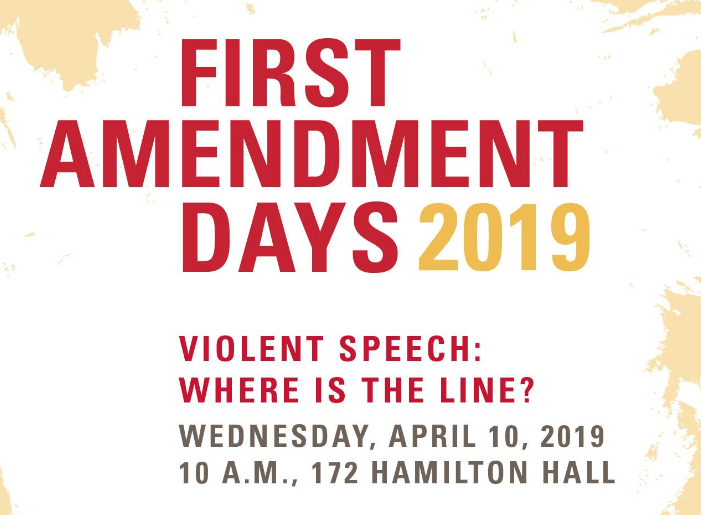The line between offensive and violent speech
April 10, 2019
Brenda Witherspoon, senior lecturer in the Greenlee School of Journalism and Communication, led a discussion Wednesday about the difference between offensive and violent speech.
The opening topic was about the recent shooting in New Zealand and how the shooter live streamed the event. The shooter also published a manifesto, describing the intent before the shooting, which was sent to local media. Shortly after the shooting, the prime minister pledged to no longer speak the person’s name or give any more attention and urged others to do so. New Zealand has free speech protection, but they also have someone who distinguishes the difference between offensive and violent speech.
Witherspoon asked the discussion group their thoughts about the censorship and how it would apply in the United States. Michael Bugeja, professor in the Greenlee School of Journalism and Communication, said there was the idea of a sixth freedom of the First Amendment, which would be the freedom of conscience, but it was excluded from the current form of the Constitution.
“Freedom of conscience would make this a violation of the First Amendment, had that been included,” Bugeja said. “People are trying to get back to this sixth [freedom of the first] amendment, I’ve come to think the sixth [freedom of the first] amendment, both freedom of conscience should have been left out in the first amendment.”
Bugeja said he has gone back and forth on this aspect. If the sixth freedom was in the final verison of the Constitution, it would help underrepresented groups.
Mathew Grisham, a junior in journalism and mass communication, agreed with Bugeja about the sixth freedom.
“It has upsides if the sixth [freedom of the first] amendment were to be there, but I think the downsides are potentially more dangerous on the censorship ground and stuff like that and stopping speech of what basically you don’t wanna hear, like you don’t wanna hear over racism and everything like that,” Grisham said “But the potential downside could be used against the people by the politics, and stuff that [Bugeja] mentioned is a lot more dangerous.”
Bringing this idea of the freedom in relation to the New Zealand manifesto and livestream shooting, Witherspoon questioned if these actions are protected by freedom of speech if the format of the video were to be changed, for example if it were to be on security camera.
Dylan Tejral, a senior in journalism and mass communication, said that it could be protected by the First Amendment, since the action was politically motivated. Kobe Gaines, a junior in journalism and mass communication, said the video should be public, but limit the age of the viewer to those who are 18 and above.
“I think if you’re 18 years old I think you should be able to watch it, you don’t want little kids, you know nieces or nephews, to watch that,” Gaines said. “But if you’re at the high school to college base level, and this, you know, is common around you in a sense, then I think you have the right to watch it.”
Witherspoon questioned the intent of filming incidents similar to the shooting, such as actors filming horrific things or police body camera footage, she asked who is responsible for censoring this content.
Bugeja said the responsibility of censorship falls upon large corporations such as Facebook and Twitter.
He continued to say that it is the responsibility of the government to protect the public from controversial content such as the New Zealand case.
“The issue of that shooter video is not really the government, it’s Facebook, it’s Twitter,” Bugeja said. “The idea is in this case, I think the government actually has a role to regulate corporations who profit through citizens interest in lured video.”







